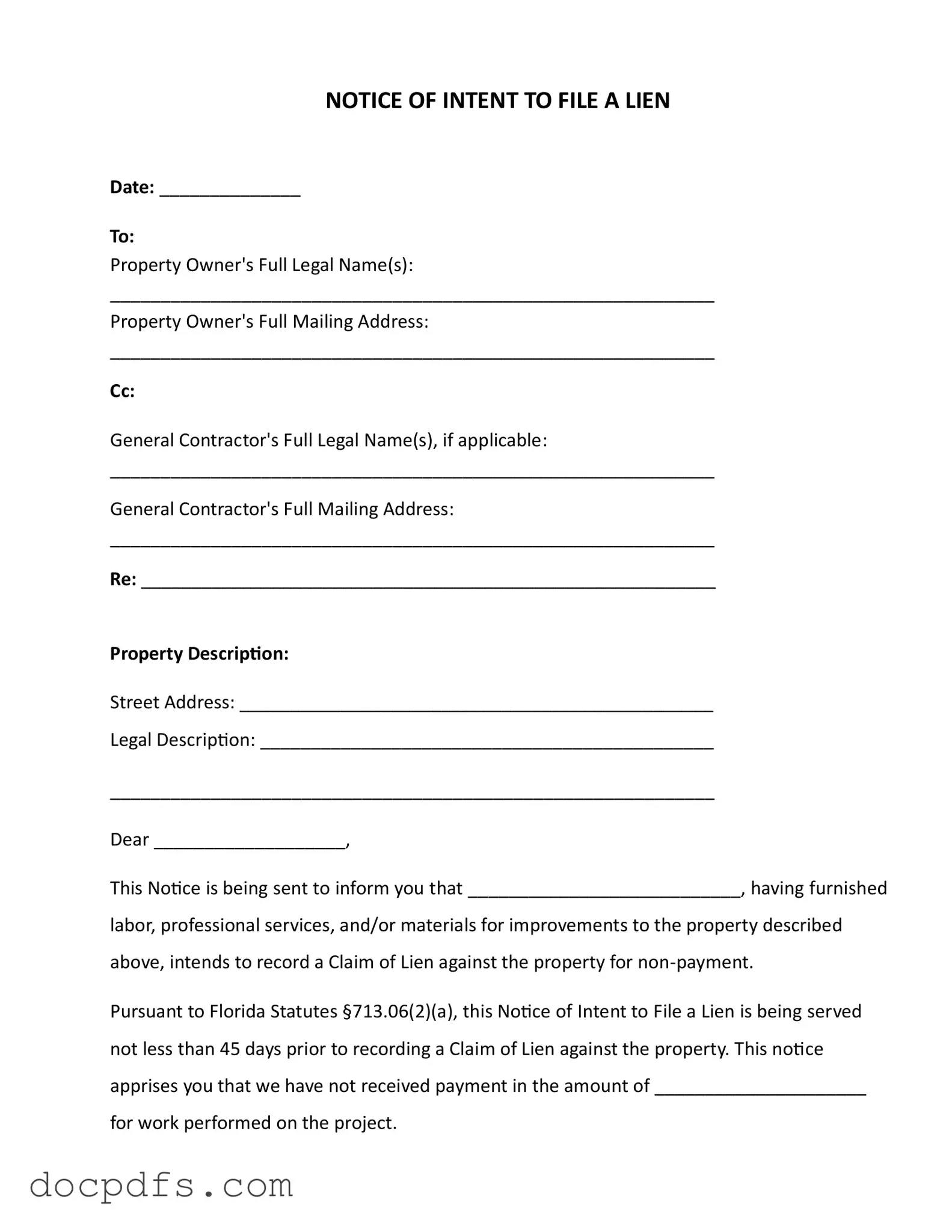The Intent To Lien form is a legal notice sent to property owners to inform them that a contractor, supplier, or service provider intends to file a lien against their property due to non-payment. This notice serves as a warning and provides the property owner with an opportunity to address the outstanding payment before any legal action is taken.
This form is typically used by contractors, subcontractors, suppliers, or anyone who has provided labor or materials for a construction project and has not been paid. It is a crucial step in protecting their right to file a lien against the property if payment is not received.
To complete the Intent To Lien form, you will need to provide the following information:
-
Date of the notice
-
Property owner's full legal name and mailing address
-
General contractor's name and address, if applicable
-
Description of the property, including street address and legal description
-
Amount owed for work performed
How much time do I have to respond to the notice?
Once the Intent To Lien notice is received, the property owner has 30 days to respond. If payment is not made or a satisfactory response is not provided within this timeframe, the contractor may proceed to record a lien against the property.
What happens if I ignore the Intent To Lien notice?
If you ignore the notice, the contractor may file a lien on your property. This can lead to foreclosure proceedings, and you may be responsible for additional costs, such as attorney fees and court expenses. It is advisable to address the notice promptly to avoid these potential consequences.
Can I dispute the claim made in the Intent To Lien notice?
Yes, you can dispute the claim. If you believe the claim is unjustified or the amount is incorrect, you should communicate with the contractor to resolve the issue. It is essential to document all communications and responses to protect your interests.
The Intent To Lien notice should be sent in writing and can be delivered via certified mail, registered mail, hand delivery, or through a process server. Ensure you keep a copy of the notice and any delivery receipts as proof of service.
What should I do if I receive an Intent To Lien notice?
If you receive this notice, review it carefully. Verify the claims made and the amount owed. Contact the sender as soon as possible to discuss the situation. Taking prompt action can help you avoid further legal complications.
